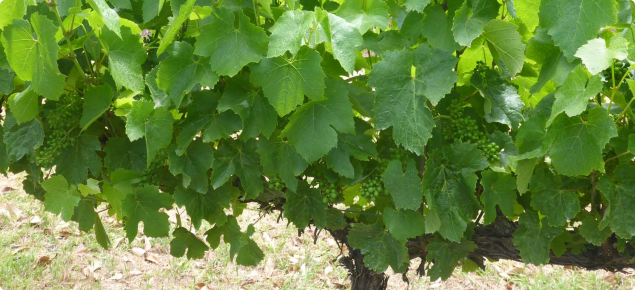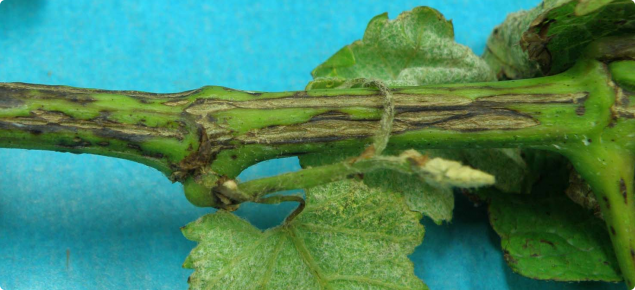Project summary
With increasing global trade and movement of people, the risk of incursions of exotic pests and diseases is increasing. There is also a growing need to substantiate freedom from pests and diseases to our trading partners. The cost of monitoring is ever increasing and to better meet these challenges, the Department of Primary Industries and Regional Development (DPIRD) and the grape industry identified a need to transform surveillance and diagnostic operations.
Improvements in government, industry and community participation in surveillance substantially strengthen our capacity to prove area freedom; and enable earlier response to incursions of harmful pests or diseases. Current surveillance systems are labour intensive and therefore costly, plus the collection and evaluation of data is not well unified.
MyPestGuide
The Western Australian viticulture industry enjoys a unique advantage of being free from a range of grape pests and diseases. However, the industry is vulnerable to the introduction of exotic pests and diseases that would have a major negative impact on access to markets and profitability of grape producers.
MyPestGuide is a biosecurity surveillance suite of tools, designed to assist the agriculture industry and general community in identifying plant pests and diseases that are potentially a threat to the agriculture industry and the environment.
MyPestGuide Grapes is an identification aid tool for grape pests. The guide provides images to aid identification along with text on description, life cycle, damage and management options. It is searchable by damage seen or pest description; provides links to other relevant documents and a direct link to MyPestGuide Reporter for reporting of pest occurrences. One of the key outcomes from the development and uptake of MyPestGuide Grapes is the education of what the biosecurity threats look like and to encourage growers to monitor for them. MyPestGuide Grapes is available as a mobile application, available on Google Play and iTunes, and on-line (note that the on-line version is not currently compatible with Internet Explorer 11, it will work with Chrome, Firefox and Edge).
Version 1.4.10, released in December 2017, has 200 pest profiles. This was the final major release as part of this project.
When combined with MyPestGuide Reporter mobile app, the MyPestGuide Grapes mobile pest app becomes a powerful on the spot, mobile surveillance tool - combining the eyes of industry, surveillance personnel and the community (known as citizen science surveillance). This increases the chance of an early detection of a new pest or disease or one starting to act in a newly destructive manner.
New pests or diseases that affect grapes can increase the costs of production and impact on trade. Early detection is essential to limit the potential damage to the grape industry. Reporting of common pests is also beneficial - these help to build pest profiles for the industry to help direct future research as well as being used for inference reporting of exotic pest freedom for market access requirements. Pest reports can also be made directly on-line from the MyPestGuide community web site, this is also where you can view other community reports and all your own reports if you register.
Please see the Mobile app centre page for further information on all the current apps available.
Effectiveness of MyPestGuide in improving biosecurity
MyPestGuide Reporter was released as a stand-alone reporting tool in September 2015. MyPestGuide Grapes field guide/mobile app was launched in November 2015. Up until May 2018 there had been over 4200 downloads of MyPestGuide Grapes and over 15 500 downloads of MyPestGuide Reporter, across the two platforms combined.
Reports of pests on grapes, submitted via MyPestGuide Reporter, increased annually during the project; from 17 in season 2015/16 to 35 in season 2017/18, with a total of 85 reports.
Apart from providing identification confirmation, we also evaluated the reports sent in and grouped them according to various demographics - there had been a range of pest issues sent in and from a range of production regions. We can also pull out reports of pest on other crops that might also pose a threat to the viticulture industry.
MyPestGuide Reporter is used for reporting all plant pests, not just those associated with grapes. Up until May 2018, there had been over 15 500 pest reports submitted, by over 5300 unique users. While the number of reports of pests on grapes submitted to MyPestGuide has been modest, there has been a substantial number of reports submitted to MyPestGuide overall.
There have been no reports of previously unreported pests of significance to the grape industry in WA during the project period; however MyPestGuide assisted in identifying 16 pests that were either new records to WA or demonstrated an increased range. This provides an indication as to the potential of MyPestGuide to provide biosecurity benefit to the viticulture industry in WA if efforts continue to encourage uptake and reporting.
We also investigated the use of inference reports to test how reports of commonly seen organisms can be used to infer freedom from a more serious threat. Though the low numbers of reports is limiting the statistical strength of this at present, it does show potential. MyPestGuide Reporter was also used to send in 'Nil detection' reports and this data can contribute to determinations of pest freedom.
WA Viticulture Industry Biosecurity Plan and Manual
The project also aimed to improve the biosecurity preparedness and capacity of the viticulture industry in Western Australia.
To achieve this, DPIRD worked with industry to build a WA Viticulture Industry Biosecurity Plan (WAVIBP) and a WA Viticulture Industry Biosecurity Manual (WAVIBM). These documents were designed to complement the national biosecurity plan and manual produced by Plant Health Australia. The WA plans have been developed to deal with biosecurity threats to the viticulture industry in WA from organisms that are present in other parts of Australia, while the national plans deal predominantly with pest threats currently exotic to Australia. The WAVIBP identifies, evaluates and rates the potential biosecurity threats, while the WAVIBM includes management strategies to deal with the more significant threats identified in the WAVIBP.
The WAVIBP identified six organisms as high priority pest threats and a further 39 organisms as priority pest threats to the WA viticulture industry.
The Western Australian Viticulture Industry Biosecurity Plan was completed in December 2016, with a review and update in August 2018 (version 2.0).
The Western Australian Viticulture Industry Biosecurity Manual was completed in August 2017, with a minor update in June 2018 (Version 1.1).
Both documents are now ‘live’ with the capacity to be reviewed and updated as required.




